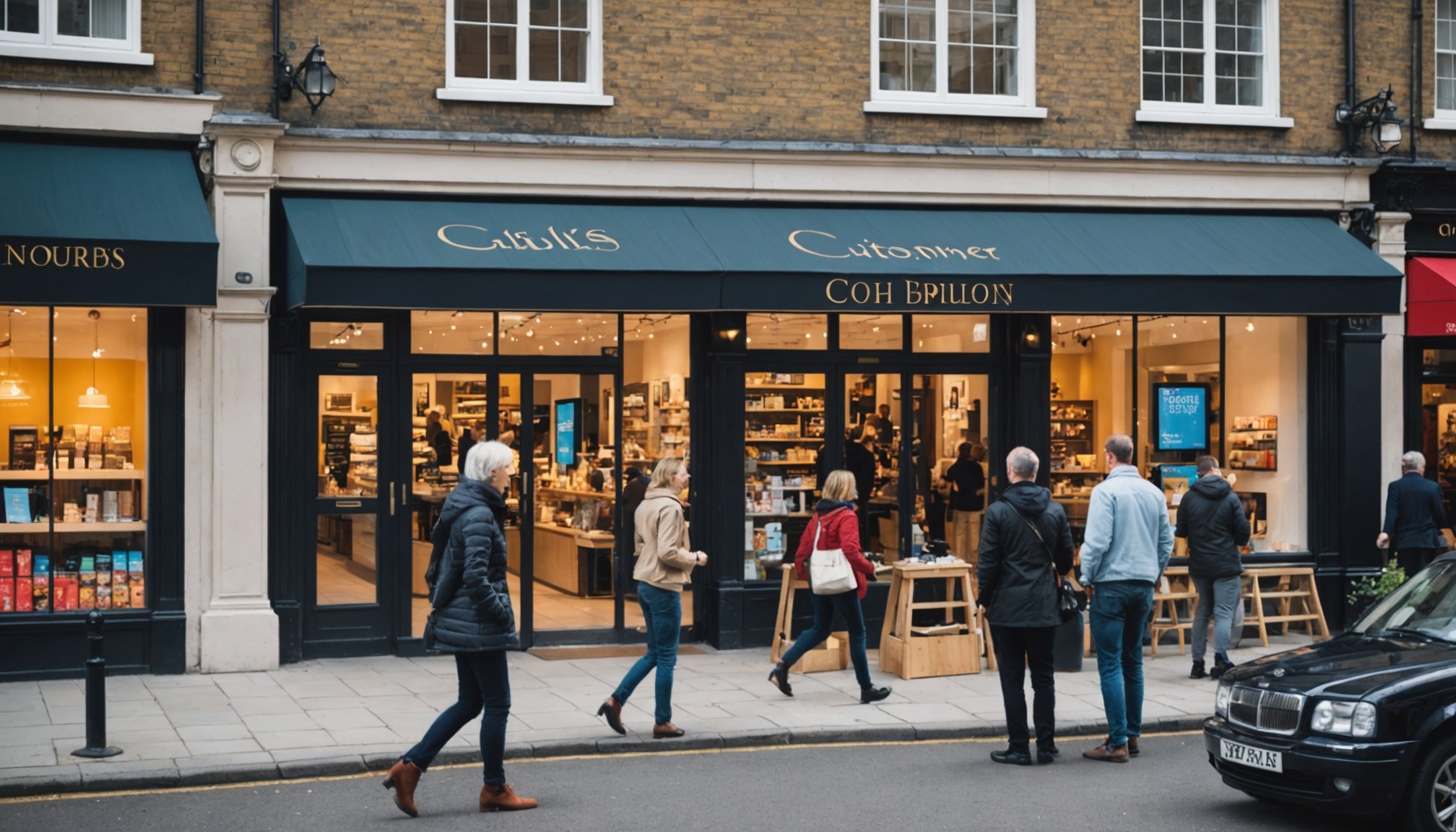Understanding Customer Loyalty
In the ever-evolving retail industry, customer loyalty has become a pivotal element for business success. This can be defined as the customer’s willingness to repeatedly return to a company for their needs, often preferring this company over competitors. Understanding and nurturing this aspect is integral in the competitive UK market.
The UK market reflects a significant trend towards customer-centric strategies. Retailers who excel in retaining customer loyalty tend to focus extensively on personalized experiences and rewards that meet specific customer needs. Customer expectations in the retail industry are heavily influenced by the convenience and value that digital solutions offer.
Also read : Essential tactics for uk retailers to master seasonal demand shifts
Insights into customer behavior reveal that modern customers seek more than just transactional interactions. They desire a connected experience where their preferences are recognized and rewarded consistently. Loyalty programs, such as point schemes or exclusive deals, are effective but must evolve to meet the digital-savvy and value-driven consumer demands of today.
In summary, emphasizing customer loyalty within the retail industry not only boosts sales but also secures a brand’s long-term standing in the UK market. Retailers should continuously adapt to changing consumer behavior to maintain and enhance their customer relationships effectively.
In parallel : Revolutionizing energy: discover vallourec's new solutions
Key Strategies for Building Customer Loyalty
Building customer loyalty is essential for enhancing retention rates and establishing successful practices. An effective strategy involves implementing robust communication and engagement tactics. Engaging with customers consistently can be achieved through regular, value-added interactions. Offering exclusive updates and ensuring responsive customer service foster trust and satisfaction.
Personalization plays a crucial role in improving the customer experience. By tailoring services and communications to individual preferences, businesses demonstrate that they value their customers. For instance, personalized email recommendations based on past purchases or browsing history can significantly heighten customer satisfaction and encourage repeat business.
Utilizing social media and digital platforms is another potent strategy for connection. Platforms such as Instagram and Facebook enable businesses to reach a broader audience, engage interactively, and gather customer insights in real-time. Through comments, direct messages, and forums, companies can address inquiries swiftly and nurture a strong community presence.
Investment in these practices not only bolsters loyalty but also leads to better retention rates. Maintaining customer relationships through communication, personalization, and digital engagement ensures that clients remain committed and enthusiastic. With strategic implementation, businesses can convert satisfied customers into devoted advocates.
Creating Successful Loyalty Programs
A well-crafted loyalty program is key to boosting customer engagement and building long-term relationships. The most effective programs share common elements. Firstly, they offer meaningful rewards that provide genuine value to customers, hence encouraging repeat purchases and increasing engagement. Such rewards might range from discounts and exclusive offers to early access to sales or unique experiences.
Another critical component is simplicity. Customers are more likely to engage with a program that is easy to understand and participate in. Clear communication and straightforward redemption processes are essential.
Exploring UK retail, notable case studies of successful loyalty programs include those from Tesco and Boots. Tesco’s Clubcard offers personalised discounts and shopping insights, creating a tailored experience that resonates with customers. Meanwhile, Boots Advantage Card integrates health and beauty advice, enhancing the everyday shopping experience.
To ensure the success of a loyalty program, measuring its impact is crucial. Metrics such as customer retention rates, purchase frequency, and program participation rates provide insights into engagement levels. Regularly analysing these metrics can help in tweaking the rewards system, thus maintaining and even boosting customer loyalty over time.
Tools and Technology for Enhancing Loyalty
In the modern retail landscape, Customer Relationship Management (CRM) tools play a pivotal role in managing customer interactions. These systems streamline communication, offering a holistic view of customer profiles which helps in tailoring services to individual needs. CRM tools enable retailers to track purchases and preferences, making it easier to deliver targeted promotions and build long-term loyalty.
The utilization of analytics tools is equally essential for understanding customer behavior more deeply. By analyzing data, businesses can identify patterns and trends, allowing for strategic decision-making. For instance, retailers can predict shopping habits or highlight products likely to appeal to specific sections of their customer base. This data-driven approach ensures that marketing efforts are not just broad but precise and impactful.
To further enhance customer loyalty, leveraging technology in retail can significantly improve personalized shopping experiences. Technology enables retailers to offer features like personalized recommendations, mobile apps with tailored deals, or even virtual shopping assistants. These innovations make shopping more convenient and engaging for the customer. By combining CRM systems, robust analytics, and advanced retail technology, businesses can not only attract but also retain a loyal customer base.
Measuring and Analyzing Customer Loyalty
In the competitive marketplace, understanding and enhancing customer loyalty is critical for businesses. Key performance indicators (KPIs) serve as vital tools to assess and measure this loyalty. KPIs such as Net Promoter Score (NPS), Customer Lifetime Value (CLV), and Repeat Purchase Rate are frequently used to evaluate customer satisfaction and engagement levels. These metrics provide a comprehensive picture of how loyal customers are and help identify areas that need improvement.
The significance of customer feedback in this context cannot be overstated. Regularly collecting and analyzing feedback is essential for capturing honest opinions about products or services. This feedback reveals customer satisfaction levels and highlights potential areas for improvement, thus offering actionable insights.
Tracking retention rates is another crucial strategy in the analysis of customer loyalty. By implementing retention analysis, businesses can monitor how many customers return after their first purchase. This involves strategies such as personalized communication, loyalty programs, and exceptional customer service. Such measures ensure that customers feel valued and continue engaging with the brand. Consistent analysis of these factors enables enterprises to make informed decisions, enhance customer experiences, and ultimately bolster loyalty over the long term.
Case Studies of Retail Brands with High Customer Loyalty
Exploring the strategies and successes of these retail case studies offers insights into how some successful brands achieve remarkable loyalty.
Brand A: Innovative Approaches
Brand A exemplifies a forward-thinking approach in creating strong customer relationships. By harnessing technology, they’ve incorporated seamless, interactive platforms that allow for personalized shopping experiences. This innovation not only addresses individual customer preferences but also enhances repeat engagement. Their loyalty achievements are significant, largely attributed to adaptive marketing strategies that evolve with consumer demands.
Brand B: Engaging Customer Experience
Retail success for Brand B is rooted in its ability to offer an engaging customer experience. They focus on creating immersive store environments and experiential marketing campaigns. This includes interactive product trials and community-centered events, which foster a deeper connection with their customer base. The tangible results of these efforts reflect in improved customer retention rates.
Brand C: Effective Reward Systems
Brand C prioritizes effective reward mechanisms as a cornerstone of their loyalty strategy. They implement tiered loyalty programs that offer compelling incentives for continued engagement. By customizing rewards and ensuring consistent value delivery, they maintain high levels of customer satisfaction. The lessons learned highlight the necessity of understanding unique customer needs and adapting incentives accordingly, aiding other retailers in boosting loyalty.











